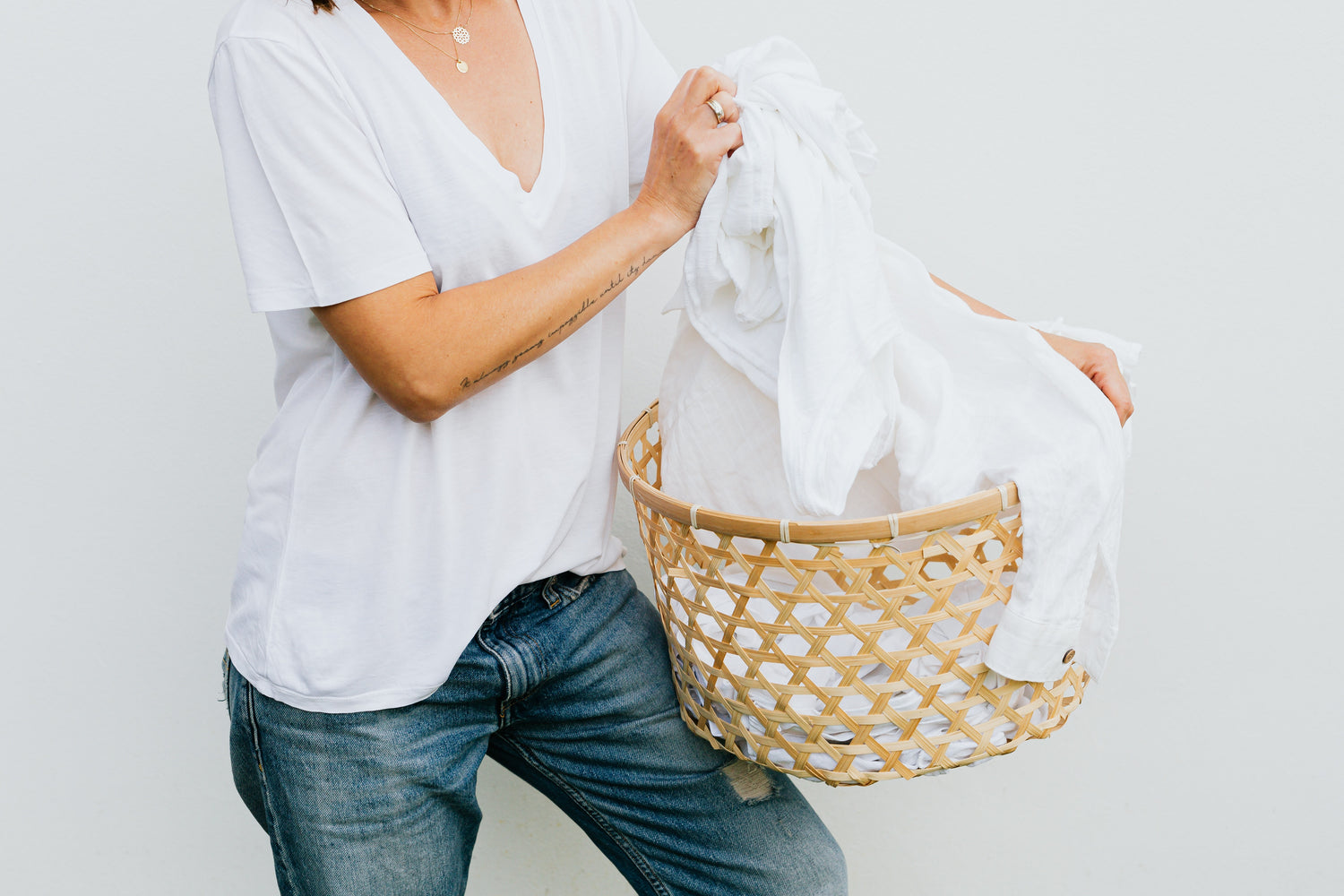
How to Avoid Static Cling in Your Laundry
Static cling occurs when fabrics rub up against each other repeatedly in a clothes dryer, creating static electricity. The problem can happen year-round and affect both household dryers and commercial dryers in hotels and other businesses that need to launder linens and other items.
There are options to reduce static cling and the unpleasant static shock that can occur if you touch a charged item that is just out of the dryer. However, the fabric softeners and dryer sheets that combat static cling often contain chemicals. The compounds can effectively reduce static cling, but they may remain on the clothing and irritate people with sensitive skin or leave a chemical scent on the fabric. Some common dryer sheet ingredients, such as benzyl acetate, have even been linked to certain types of cancer and respiratory illnesses.
Luckily, there are options for non-toxic static cling removal. These chemical-free alternative options and techniques can help you remove static cling without resorting to dryer sheets.

What Causes Static Cling?
Technically, static cling comes from the triboelectric effect, which occurs when items rub against each other repeatedly. When clothes tumble against each other and the metal on a regular dryer, they create and store static electricity, which causes the fabric to stick together. It can seem immune to your shaking or hanging and can even leave you with a nasty shock.
How Can You Reduce Static Cling?
If you want to reduce static cling, here are your chemical-free alternative options for doing so.
Hang-Dry Clothing
If you live in an appropriate climate, you can hang-dry your clothing instead of using a dryer. Since the tumbling motion of a dryer is what causes the triboelectric effect, there is no danger of static cling if you use a clothesline and the wind and sun to dry your apparel. Unfortunately, if you live in a cold, wet, or cloudy climate, this option is not very practical.
Use Vinegar
You can place a washcloth dampened with vinegar in the dryer along with your clothes. The acidic liquid will help prevent static cling. When you put the washcloth in the dryer, it will smell like vinegar, but the odor will dissipate as the liquid dries. Vinegar can also serve as a substitute for fabric softener. You can add essential oils to provide a pleasant scent that counters the strong initial odor of the vinegar.
A Wool Dryer Ball

One of the best non-toxic static cling removal options is a wool dryer ball. This option is the perfect substitute for dryer sheets because it is just as convenient and will not cause any odors or unwanted side effects.
The main question is how does this unique solution reduce static cling in your dryer? The wool ball circulates air throughout the dryer, which causes the clothes to dry more quickly. Less time in the dryer will limit the buildup of static electricity.
Furthermore, wool dryer balls absorb moisture. This creates a more humid environment inside the dryer. Since static electricity prefers dryer air, it cannot build up in the presence of a dryer ball. Unlike dryer sheets, this option is reusable.
But here is the BEST TRICK: SEPARATE YOUR FABRICS BEFORE DRYING
Why? Natural fibers (like cotton) take longer to dry than synthetic fibers (like workout clothes). So while your cotton is drying your workout clothes are overdrying causing static in your laundry.
Make Your Wash and Dry Cycle More Eco-Friendly
In addition to an effective option like a reusable wool dryer ball to reduce static cling, you can also purchase non-toxic laundry detergent to make your entire wash and dry cycle more eco-friendly.



Leave a comment